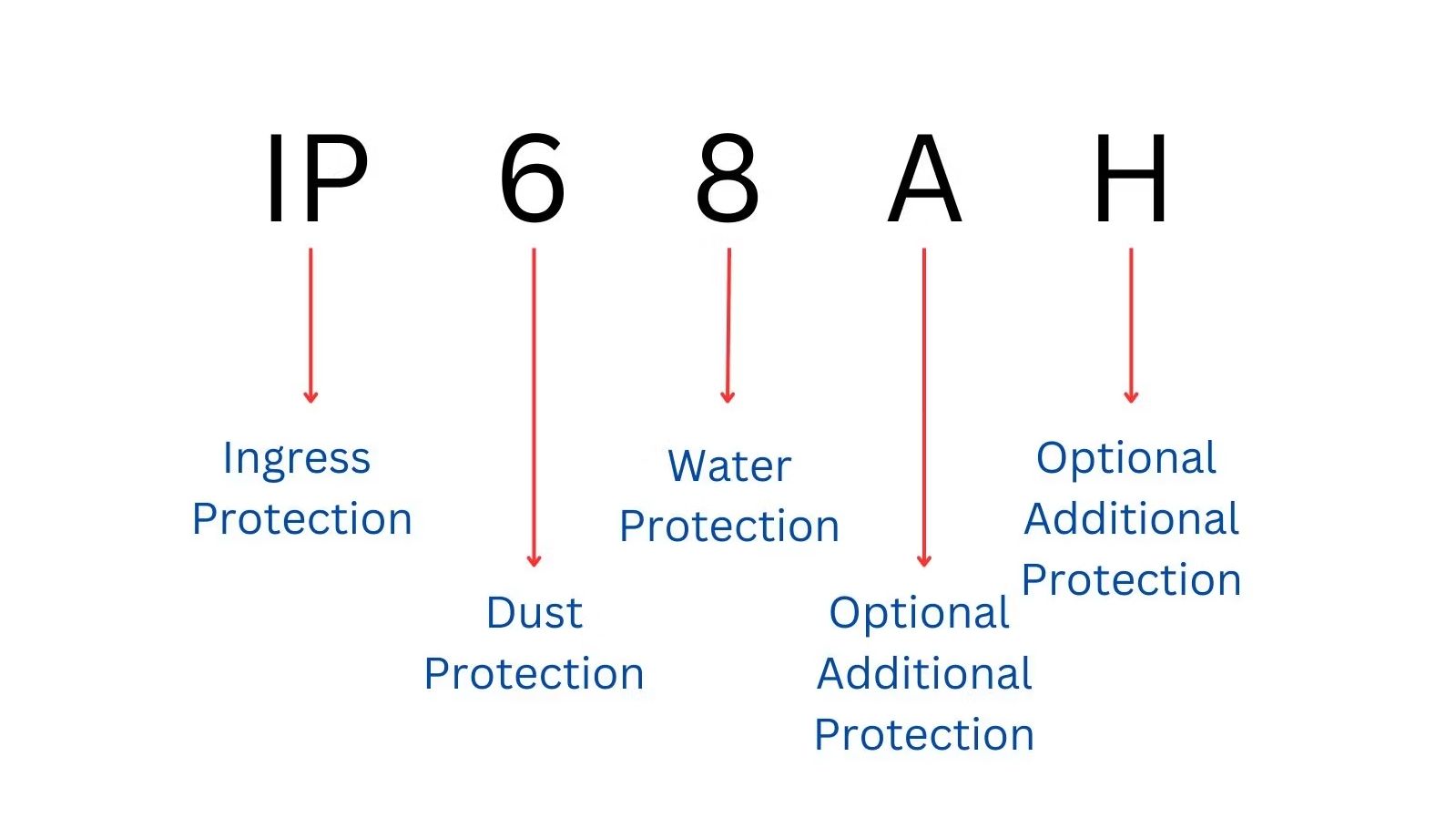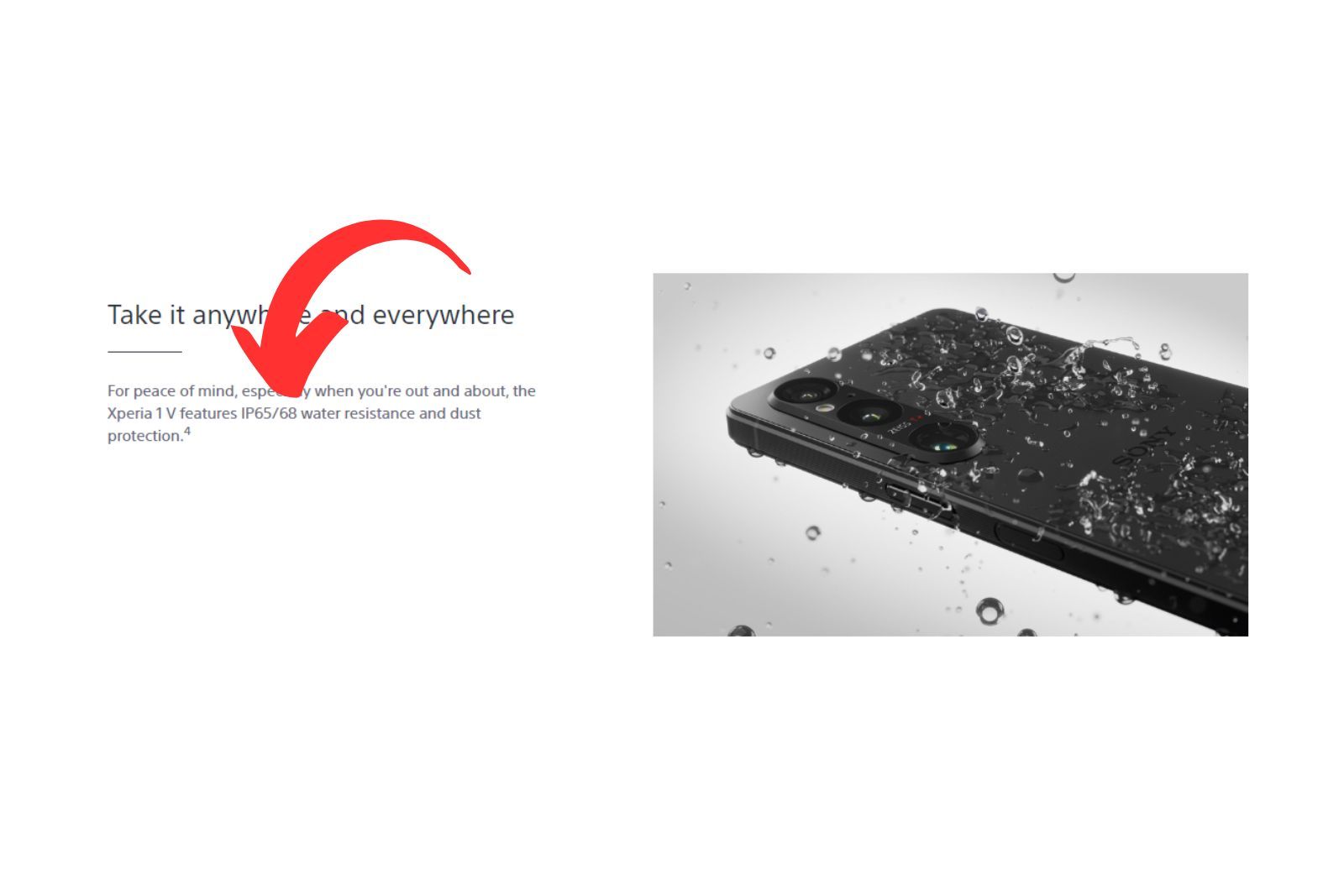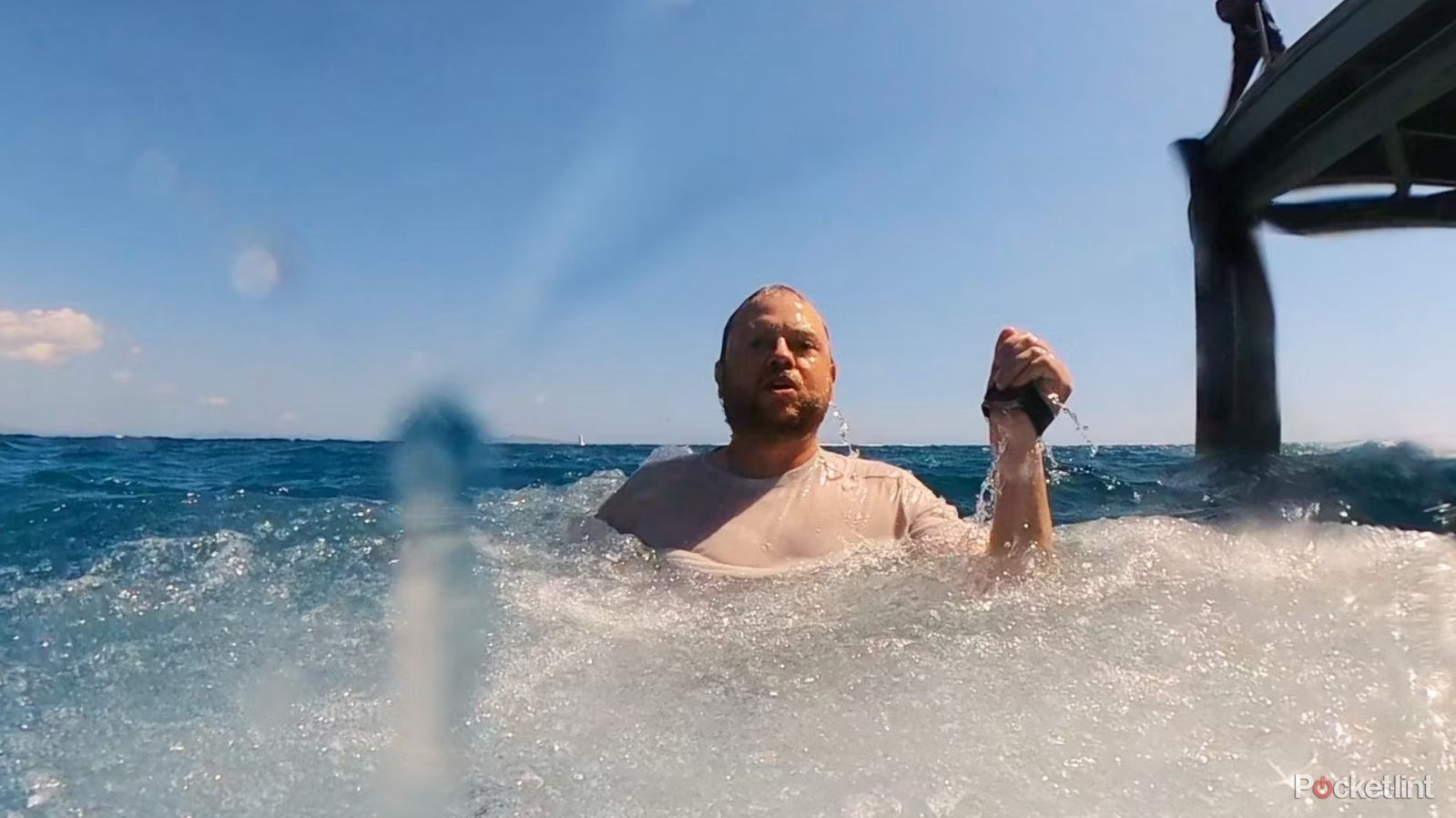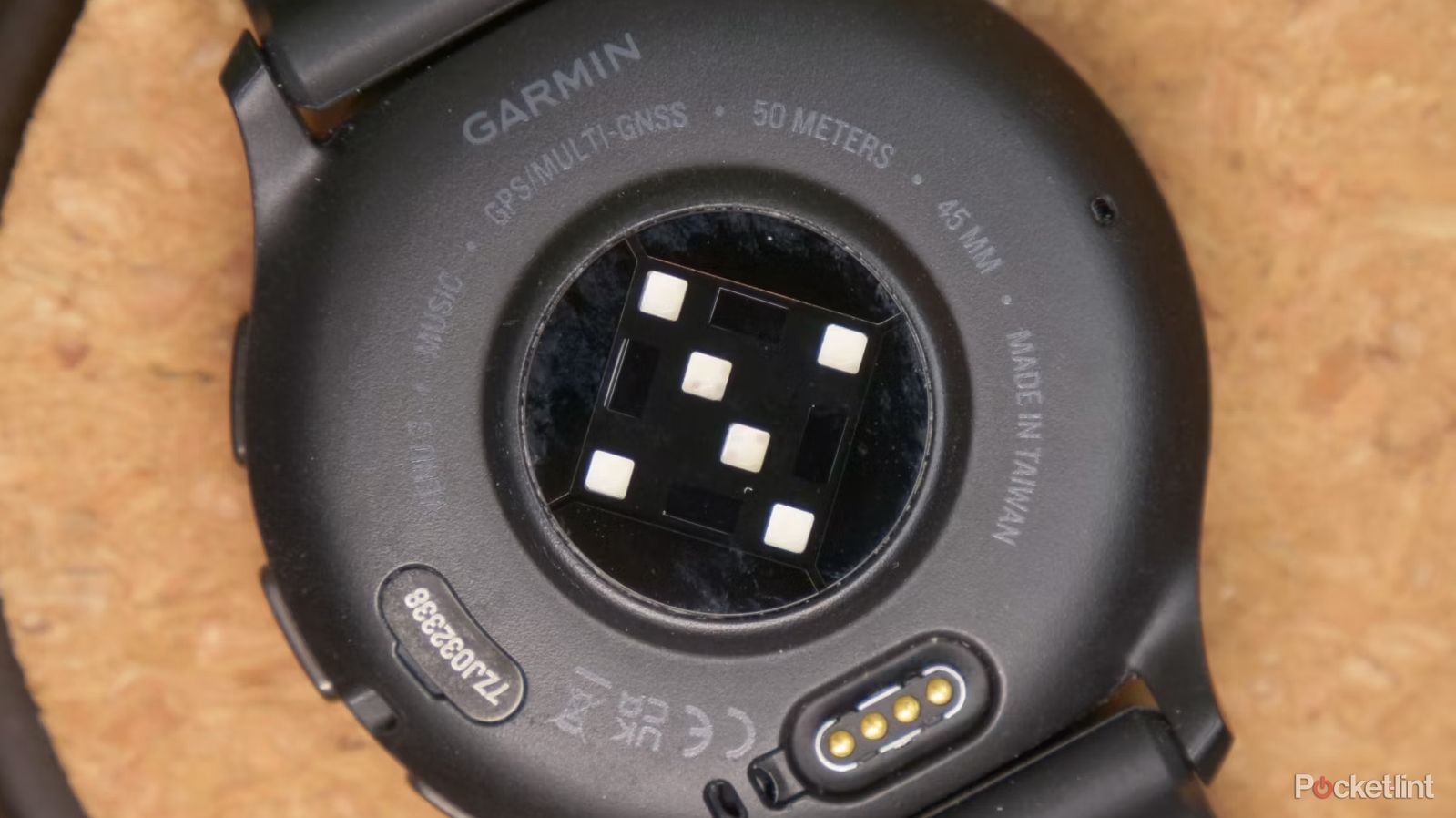Main points
- Manufacturers are now making waterproof phones the norm, with most upcoming smartphones expected to have some form of dust and water resistance.
- When you invest in a new device, such as a smartwatch or phone, it must be able to withstand accidents such as falling into water or the toilet.
- Understanding the IP rating is critical to understanding how dust- and water-resistant your device is and ensuring durability.
Modern phones rarely come without some kind of protection, especially dust and water resistance. What was once a fairly niche feature of dedicated phones has now become a standard, and most upcoming smartphones are likely to feature some form of dust and water resistance. What’s more, when a company releases a flagship phone, everyone expects it to be waterproof, and if it isn’t, it’s a big flaw in the device.
To be honest, this isn’t surprising. If you’re spending a fortune on a device, whether it’s an action camera, a smart sports watch, or a new phone, you need to know if it can survive rain or an accidental drop in the toilet.
Manufacturers know this and most new phones these days, especially high-end ones, come with water and dust resistance. It’s also sparked some controversy, as companies like Apple try to explain the removal of the headphone jack as a way to make phones waterproof, not to sell Bluetooth headphones.
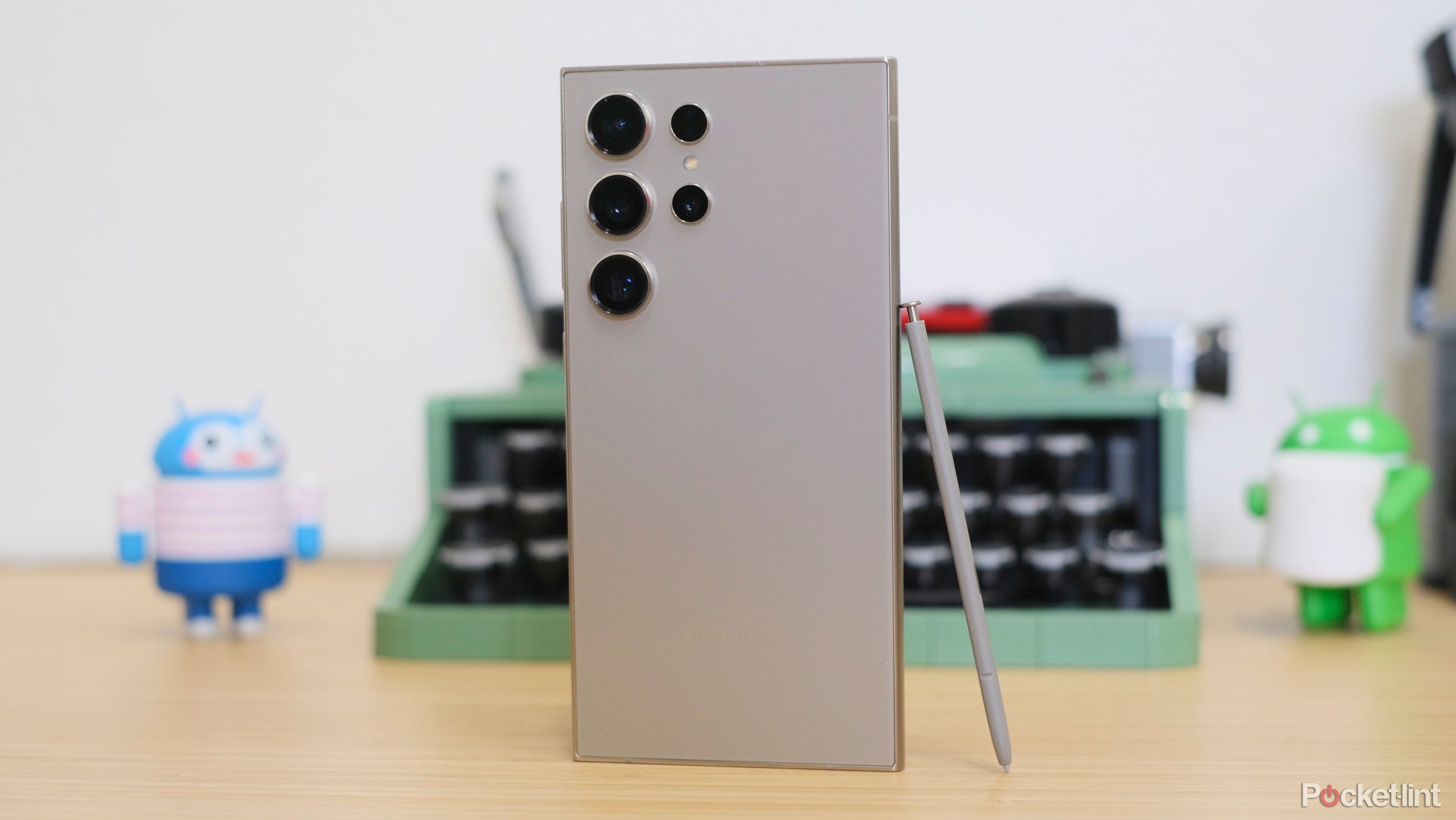
The best waterproof phone for watching TikTok in the toilet
Water and electronics don’t mix, which is why we now have waterproof phones. Here are the best IP-rated phones you can buy.
It’s one thing for the manufacturer to tell you that the device is waterproof, but it’s another thing for a third party to confirm it. This is why all waterproof devices have some kind of certification that tells you what types of conditions they can withstand and guarantees that the product has passed rigorous testing to confirm its level of resistance. Unfortunately, this system can be a bit confusing. The many different codes, markings and names for water and dust resistance qualities and certifications can be confusing. Let’s explain what all this means.
IP Rating: What do the letters and numbers stand for?
The mIP rating is the most common waterproofing certification found on electronic devices. This certification is regulated by the International Electrotechnical Commission (IEC) and is generally regarded as reliable and trustworthy. If you see an IP rating on a device, you can be sure that it has been properly tested and meets the specified standards.
IP ratings usually consist of four characters. There are two letters followed by two numbers without any hyphens or spaces between them. It’s important to remember what certification looks like, as some crafty manufacturers may try to trick you into thinking it’s certified water-resistant by placing a similar code on their device.
The first two characters, I and P, represent entry protection, or in other words, how good it is at stopping things from getting into it. The first number indicates how well it protects against small solids (dust/sand, etc.), with a maximum rating of 6. These range from no protection at all to dust protection.
After the four common characters, you may also receive a few additional letters that represent specific types of protection from the elements. However, these are more technical and don’t appear on personal tech products, so you don’t really have to worry about them.
|
first number |
Solid/dust proof |
|---|---|
|
0 |
no protection |
|
1 |
Protects against solid objects 50 mm or larger |
|
2 |
Protects against solid objects 12.5 mm or larger |
|
3 |
Protects against intrusion by solid objects 2.5 mm or larger |
|
4 |
Protects against solid objects 1.0 mm or larger |
|
5 |
Dustproof (but not completely dustproof) |
|
6 |
dust-proof |
The second number is the liquid or water resistance level, with a maximum level of 9. This ranges from unprotected to high pressure and high temperature water jets.
|
second number |
water resistance |
|---|---|
|
0 |
no protection |
|
1 |
Prevent small water droplets from falling vertically onto the device |
|
2 |
Prevent small water droplets from falling vertically at an angle of 15 degrees to the device |
|
3 |
Prevents water from spraying at a 60-degree angle from both sides of the device |
|
4 |
Prevent splashes from any direction on the device |
|
5 |
Prevent water from squirting gently in the jet |
|
6 |
Protects against water sprayed by powerful jets |
|
7 |
Protect against temporary immersion in water |
|
8 |
Prevent continuous immersion in water for long periods of time |
|
9 |
Protects against water jets at high pressure and temperature |
In other words, if you see IP69 somewhere, you know it offers the highest IP rating for dust and water resistance. At least that’s the case when it comes to IP rating certification.
There is also a logo that may appear in place of either of these two numbers – it is a capital X. If you see an area. IP certification costs manufacturers a significant amount of money, so if they have other certifications or feel they don’t need one of the IP standards, they may choose to certify one of the two protection types.
What does IP68 mean?
There are many combinations of IP ratings that can be confusing, but IP68 is one of the most common combinations found on technology devices.
For solids, the device has been tested for dust resistance and has been found to be dust-proof. Anything with “6” as the first number is immune to dust and can be tested and certified within this specific range. For the second number, 8 means it protects against immersion in water for the specified depth and duration.
- IP = Ingress Protection
- 6 = Dustproof
- 8 = Survived being submerged in water
It’s worth noting that just because something has an IP68 rating and is built to last underwater, it might not be tested to withstand rain or some kind of spray from a jet. This is why Sony states IP65/68 on its devices. However, in most cases, you would think that if a device is IP68 compliant, it should also be able to handle the conditions required to be IP65 certified.
Sony/Pocket Velvet
It’s also worth mentioning that the IEC (the international standard that governs IP ratings) doesn’t specify the depth or duration of waterproofing – it just sets the standard for 7 and 8, saying 8 requires more than 7. Typically you will find that 7 is equivalent to 1 meter for 30 minutes, while 8 is longer – but the manufacturer should indicate the level of protection that has been tested. For example, Apple says its IP68-rated iPhone 15 can survive up to 6 meters of water for up to 30 minutes.
What about IP65, IP53 or others?
Many times you’ll see products with multiple IP ratings simply because they’ve been tested for different types of water resistance. For example, the Sony Xperia 1 IV has IP68 and IP65 protection ratings. As mentioned earlier, the IP68 rating means it can survive underwater. IP65 means it handles spray well, too.
Technically, it was tested using water sprayed from a 6.3mm nozzle. But in practical terms, that just means it can withstand rain or showers. Just don’t spray it with a pressure washer.
If you find an older device that has IP53, that means it’s somewhat dustproof, but not completely, and can withstand water spray, but not water jets, and certainly won’t be submerged.
What is the IP6X, WR50, and WR100 rating of Apple Watch?
- IP6X = Dustproof
- WR50 = waterproof depth up to 50M
- WR100 = waterproof depth up to 100M
The Apple Watch Series 7 was released in September 2021, and the announcement used two unfamiliar terms to refer to the latest watch’s degree of water and dust resistance: IP6X and WR50. These technologies have since been applied to Series 8 and Apple Watch SE (second generation). The Watch Ultra also has IP6X, but it has WR100 instead of WR50.
As we already mentioned, the first value is dust resistance. As with any device that has IP68 or IP67, the “6” means it’s dustproof to a very high level or “dustproof,” which means dust can’t get into the watch. The “X” means it doesn’t have an IP rating for water resistance, but that doesn’t mean it’s not waterproof – it’s just not certified to that standard.
Apple’s (and others’) WR50 and WR100 labels mean water resistance to 50 meters or 100 meters respectively, and since that’s well above the 1.5m certified by the standard IP rating system, there’s really no need to own a camera with these The labeled device is certified. They are waterproof so you can take them swimming or running in the rain.
It is more common for watches to provide a depth (e.g. 50m) or atmospheric (5ATM) water resistance number, which indicates that the watch can withstand water pressure at that depth.
What does IPX7 or IPX8 mean?
The presence of the X in the ratings does confuse some people, but devices like the original Apple Watch, some Garmin cameras and wearables, and even some phones came with it. This means the device isn’t certified for dust resistance yet, but that doesn’t mean it’s not dust-resistant.
This simply means it can withstand water ingress – the Samsung Galaxy Z Flip 5, for example, has an IPX8 rating, which means it can withstand being submerged in water, but it won’t protect against dust (because of the hinge design).
What is nanocoating?
Nanocoating is a microscopically applied film that is sprayed on internal components to help water roll away anything that might be damaged by moisture.
Some companies like to make phones with water-resistant nanocoatings, but don’t provide specific IP ratings. With these devices (like the older Moto Z), the phone may not be affected by accidental splashes, light rain, or the odd splash, but it won’t survive being underwater or faced with water flow or heavy rain.
This type of nano-coating has been developed and will also provide complete immersion protection without relying on the seal of the phone body.
What does ATM machine mean?
Although some smartwatches have IP ratings, you’ll usually find ATM indicating water resistance, at least for watches designed for sports or outdoor activities. ATM stands for atmosphere (nothing to do with cash machines), which basically means how much pressure it can withstand. Or, in other words, how deep underwater can you take it?
It is generally reserved for equipment designed for use underwater, in most cases 1 ATM is 10 meters, 5 ATM is 50 meters, and 10 ATM is 100 meters. For example, Apple Watch models (except Apple Watch Ultra) have a depth of 50 meters, so they can be used to track swimming.
For details on each person’s possible IP ratings, check out the IEC’s tier-by-tier chart.
